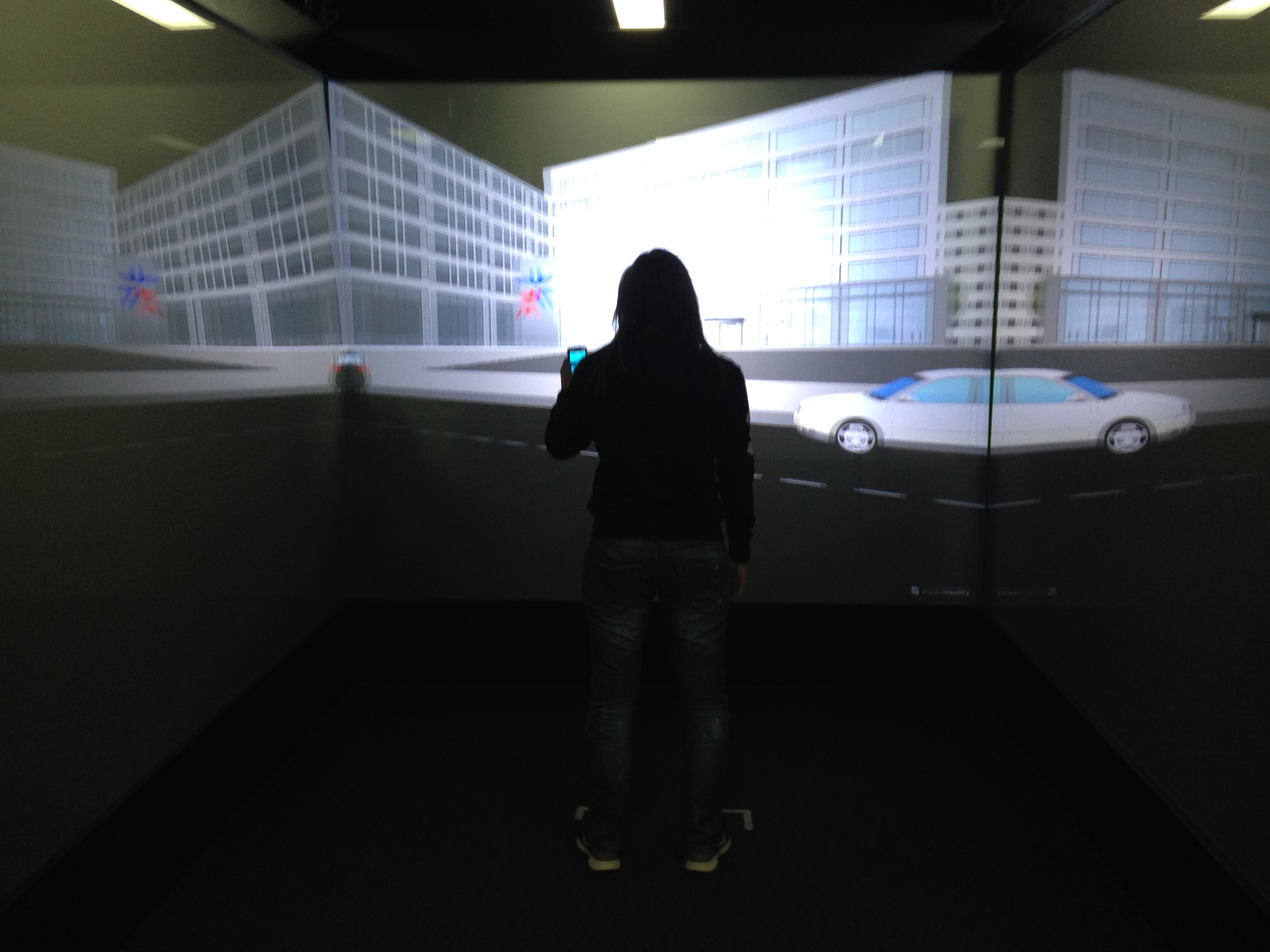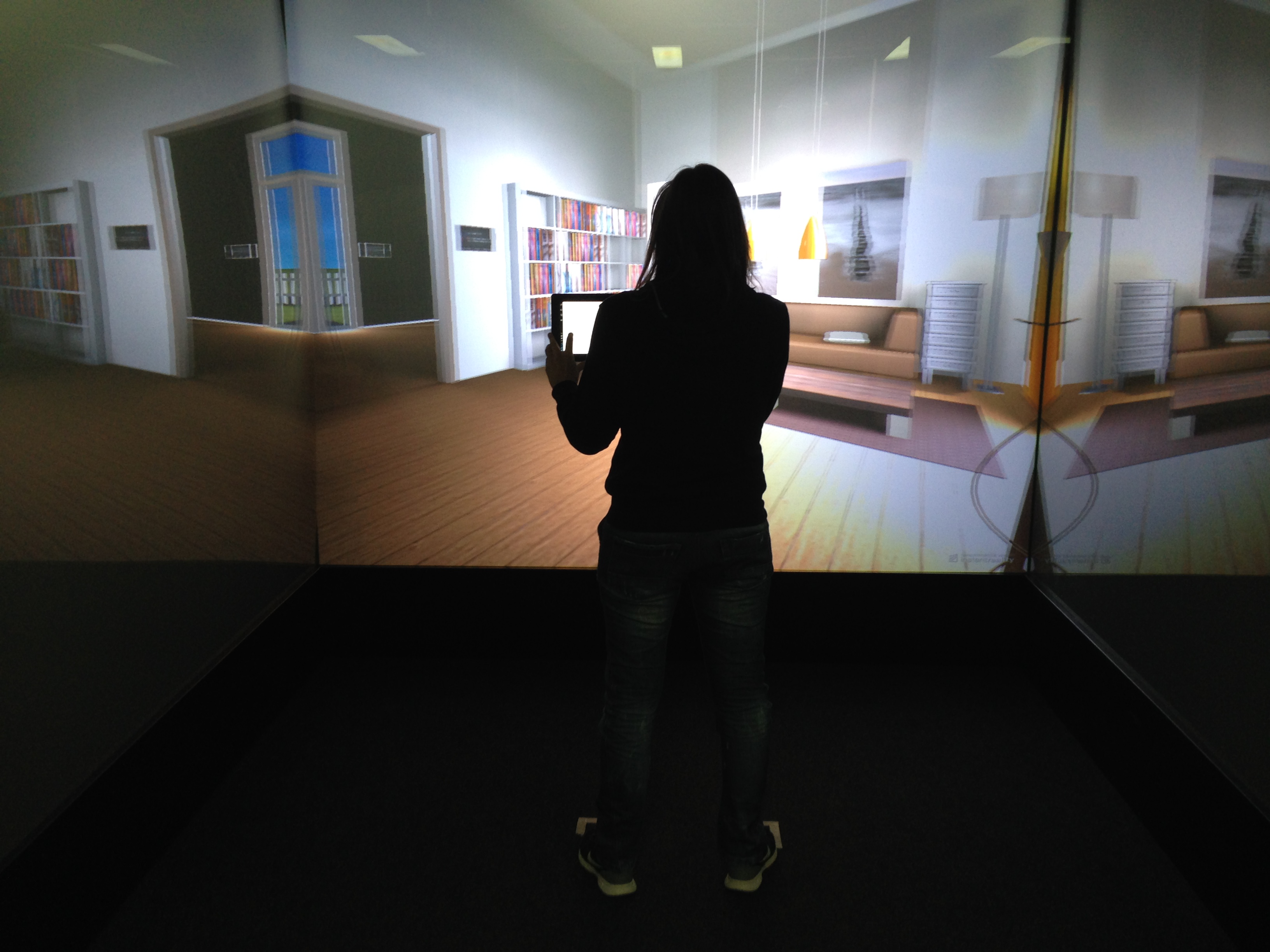TNA project : Presence and Usability in Virtual Environments
Acronym : 135-Presence and Usability in Virtual Environments-Busch
Project Lead : Marc Busch From : CURE - Center for Usability Research & Engineering
Dates : from 25th November 2013 to 29th November 2013
Description :
Motivation and objectives :
PREVIEw will compare presence and its effect on usability of two different virtual environments: One virtual environment is created with the PowerWall and the other is created with a Head Mounted Display (HMD). Participants will experience the same interaction tasks with an intelligent virtual environment. PREVIEw will collect measures of participants perceived presence of the environment and usability of the intelligent virtual environment. The objectives are to learn about the presence of the two virtual environments and the subsequent effects on usability. The collected data will be compared to already collected data about a comparison of a CAVE and the real world.
Teams :
Research topics within these projects are focused on presence in virtual environments, advanced interaction modalities, mobile systems, advanced web environments and multichannel platforms. Among participating in several funding initiatives, CURE coordinates (uTRUSTiT, Peacox, Hermes (finished)) and is partner in several projects (i.e. APSIS4ALL, ATIS4ALL, Maseltov, MUSES) within FP7.
Dates :
starting date : 25 November, 2013
ending date : 29 November, 2013
Facilities descriptions :
http://visionair-browser.g-scop.grenoble-inp.fr/visionair/Browser/Catalogs/LMSHOLO.GR.html
Recordings & Results :
PREVIEw compared presence and its effect on usability of two different virtual environments: One virtual environment created with PowerWall and another one created with a Head Mounted Display (HMD). Participants experienced the same interaction tasks with an intelligent virtual environment. PREVIEw collected measures of participants perceived presence of the environment and usability of the intelligent virtual environment. The main objective was to learn about the presence of the two virtual environments and the subsequent effects on usability.
Conclusions :
The results of this project provided valuable insight on the presence and usability of two virtual environments, realized with HMD and PowerWall. The results of this study provided insights into the role of presence in different virtual evaluation environments and helped in deciding which evaluation environment to use. The results show that reported presence is overall higher for the Kinect navigation than for the Wii Balance Board navigation (independent of the environment) and that reported presence is overall higher for Powerwall (independent of the navigation method) than for Mixed Reality. The results will be presented in detail within a scientific publication currently under preparation.
Few images :


.

VISIONAIR / Grenoble INP / 46 avenue Felix Viallet / F-38 031 Grenoble cedex 1 / FRANCE
Project funded by the European Commission under grant agreement 262044

Project funded by the European Commission under grant agreement 262044
